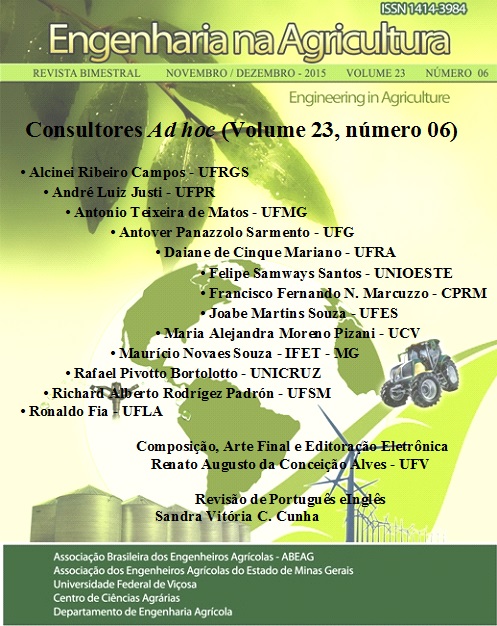CHARACTERIZATION OF THE INTERSTITIAL SOLIDS IN CONSTRUCTED WETLANDS OF SUBSURFACE HORIZONTAL FLOW - DOI: 10.13083/1414-3984/reveng.v23n6p562-574
DOI:
https://doi.org/10.13083/reveng.v23i6.610Keywords:
colmatação, entupimento de poros, tratamento de águas residuáriasAbstract
The objective of the present study was to evaluate the effect of reversing the direction of flow in constructed wetland of subsurface horizontal flow (CW-HSSF) in the qualitative and quantitative characteristics of the clogging material. For this, in the end of the experimental period, bed samples were collected from six CW-HSSF: two non-cultivated (CW-HSSF 1 and 4), two cultivated with tifton 85 grass (Cynodon spp.) (CW-HSSF 2 and 5) and two cultivated with alternathera (Alternanthera philoxeroides) (CW-HSSF 3 and 6). The interstitial solids were separated from the samples taken from the CW-HSSF porous media. In this material was quantified the mass of total solids (CST), total volatile solids (CSVT), and fixed total solids (CSFT) per volume (kg m-3) of CW-HSSF porous media. Each plant species influenced differently the distribution of CST, CSFT and CSVT in planted CW-HSSF. Even in conditions of CSVT/CST low relationship the organic fraction provided structure of the surface material support of CW-HSSF. On average, the reversal in the flow direction does not reduced the accumulation of organic matter in porous media. The high degree of clogging in CW-HSSF prevented or made less noticeable and prolonged the positive effects of reversing the direction of flow of wastewater on conditions of the porous media.Downloads
Downloads
Published
How to Cite
Issue
Section
License
Authors who publish with this journal agree to the following terms:
The author(s) authorize(s) the publication of the text in the journal;
The author(s) ensure(s) that the contribution is original and unpublished and that it is not in the process of evaluation by another journal;
The journal is not responsible for the views, ideas and concepts presented in articles, and these are the sole responsibility of the author(s);
The publishers reserve the right to make textual adjustments and adapt texts to meet with publication standards.
From submission, the author is fully conceding the paper's patrimonial rights to the publication, but retaining the owner of its moral rights (authorship and paper's identification) according to Creative Commons Attribution-Noncommercial.








 Licensed by
Licensed by 